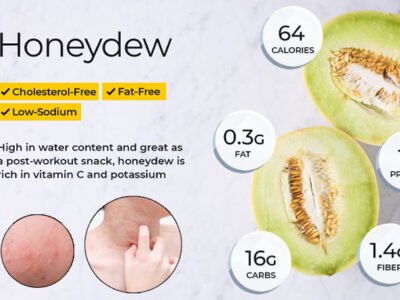
The convergence of flu, COVID-19, and RSV this winter has created a viral “triple threat” that is overwhelming hospitals and healthcare systems. As cases surge, every individual must understand these viruses and take action to protect themselves and vulnerable loved ones. This winter’s viral storm is dangerous but beatable if we know our enemy, fortify our defenses, and strengthen our communities.
The Viral Storm Is Here: Flu, COVID & RSV Converge
A perfect storm of respiratory viruses is sweeping across the country this winter. Flu, COVID and RSV (respiratory syncytial virus) are surging simultaneously, straining hospitals and healthcare workers to their breaking point.
- Flu cases began spiking in November, reaching levels not seen since the 2009 H1N1 swine flu pandemic. The CDC estimates at least 13 million flu illnesses, 120,000 hospitalizations, and 7,300 deaths so far this season.
- COVID-19 is also resurging as new Omicron subvariants emerge. Over 40,000 Americans are hospitalized with COVID, nearing last winter’s peak during the Omicron wave.
- RSV is primarily dangerous for infants but is currently hospitalizing droves of children and elderly. CDC tracking shows RSV at its highest point in over 2 years.
This triple threat taxes hospitals already facing staffing shortages and limited beds. Facilities are overflowing with sick patients, forcing many to deny care. Our healthcare heroes need the public’s help to weather this viral storm. But we can overcome it by understanding these viruses, protecting vulnerable groups, and supporting community health initiatives.
Know Your Enemy: Decoding Symptoms & Warning Signs
While all three viruses infect the respiratory tract, their symptoms and high-risk groups vary. Recognizing the unique fingerprints of flu, COVID and RSV empowers individuals to seek appropriate care.
Flu Symptoms & Risk Factors
Influenza quickly brings on fever, chills, body aches, fatigue, cough, sore throat, runny nose, and headaches. Nausea, vomiting, and diarrhea are also common in children. Those at highest risk of flu complications include:
- Young children under 5
- Adults over 65
- Pregnant women
- Individuals with chronic illnesses like asthma, heart disease, or diabetes
- Immunocompromised persons
Severe flu requires immediate medical attention – key warning signs are difficulty breathing, chest pain, confusion, and inability to keep liquids down.
COVID-19 Symptoms & Risk Factors
While omicron variants cause milder illness overall, COVID still threatens vulnerable groups. Watch for:
- Fever, chills, cough, sore throat, runny nose
- Fatigue, body aches, headaches
- Loss of taste/smell
Highest COVID risks include:
- Unvaccinated individuals
- Immunocompromised persons
- Elderly over 65
- Those with underlying conditions like lung disease, obesity, diabetes
Emergency COVID warning signs include severe trouble breathing, persistent chest pain/pressure, confusion or inability to wake up, and pale/blue-colored skin, lips or nail beds.
RSV Symptoms & Risk Factors
RSV begins with runny nose, decreased appetite, coughing, sneezing, fever, and wheezing. Parents should watch infants for:
- Rapid or shallow breathing
- Pauses in breathing
- Grunting noises when breathing out
- Wheezing, gasping
- Crackles or rattling sounds when breathing
High-risk groups include:
- Infants under 6 months old
- Premature infants
- Children under age 2
- Adults over 65
- Immunocompromised individuals
If an infant displays any of these emergency RSV warning signs, seek medical care immediately:
- Breathing faster than 60 breaths/minute
- Severe cough, wheezing, or gasping for air
- Blue color of skin, lips, or nails
- Dehydration – lack of tears, dry mouth, crying without tears
Compare and Contrast Flu, COVID & RSV
| Flu | COVID-19 | RSV |
|---|---|---|
| Sudden fever, chills | Fever, chills, loss of taste/smell | Runny nose, cough, wheezing |
| Body aches, fatigue, headaches | Fatigue, headaches, body aches | Decreased appetite |
| Cough, sore throat | Cough, sore throat | Fever |
| Nausea, vomiting | – | – |
| Highest risk: Young, elderly, chronic illness | Highest risk: Unvaccinated, elderly, chronic illness | Highest risk: Infants, premature babies, elderly |
Building Your Defenses: Essential Protective Measures
While vaccination offers the best protection against flu and COVID, layered defenses reinforce your immunity. Follow these essential measures to shield against all three viruses:
Get Vaccinated & Boosted
- Flu shot: Low flu vaccination rates this season have amplified the outbreak. All individuals over 6 months old should get an annual flu shot.
- COVID boosters: Stay up to date with all recommended COVID vaccine doses and bivalent boosters that target Omicron variants.
- RSV vaccines: RSV immunizations for pregnant women and older adults will soon be available. Multiple RSV vaccines and antibodies for infants are also undergoing testing.
Mask Up
- Surgical masks offer protection against droplets from coughing, sneezing, and breathing. Wear them in crowded indoor settings.
- N95s provide maximum filtration against all respiratory viruses. Reserve them for high-risk scenarios like travel or large gatherings.
- Cloth masks are the least protective but better than nothing. Opt for multi-layer, tightly woven fabrics with a nose wire.
Practice Healthy Habits
- Hand hygiene: Wash hands vigorously with soap and warm water for 20 seconds. Use hand sanitizer when soap is unavailable.
- Social distancing: Keep 6 feet between yourself and others when feasible to avoid close contact transmission.
- Cough etiquette: Cough/sneeze into your elbow rather than hands to prevent spread via contaminated surfaces.
- Disinfect surfaces: Viruses can survive on surfaces for hours. Disinfect frequently touched objects like doorknobs, countertops, and desks.
- Improve indoor ventilation: Open windows, use HEPA filters, and consider portable air cleaners to filter and circulate air.
At-Home Relief & Care
Over-the-counter medications can help relieve symptoms:
- Acetaminophen or ibuprofen for fever and body aches
- Cough suppressants for wet coughs, expectorants for thick mucus
- Nasal saline spray for congestion
- Lozenges for sore throat
Stay hydrated and rest until fever is gone for 24 hours. For severe illness, contact a doctor immediately.
Fortifying Vulnerable Groups Against the Triple Threat
While every individual is at risk from this triple viral threat, certain groups face amplified danger of serious complications. Parents, caregivers and community members must take heightened measures to protect vulnerable loved ones.
Guarding Infants & Young Children
Babies under 6 months old are most at risk from RSV due to their underdeveloped immune systems and smaller airways. Severe RSV can lead to bronchiolitis and pneumonia in infants. Parents should:
- Isolate infants from sick individuals
- Ensure anyone interacting with baby washes hands first
- Keep infants away from daycare/crowds during peak virus season
- Follow safe sleeping practices like room sharing without bed sharing
Flu and COVID also pose significant threats to infants. Vaccinate pregnant women to pass antibodies to babies. Breastfeed when possible to confer additional immune protection.
Young children under 5 are also very vulnerable due to their developing lungs and immunity. Monitor children for symptoms and keep sick kids home from school. Vaccinate all eligible children.
Safeguarding Older Adults
Seniors over 65 remain a high-risk group for all three viruses. Their immune systems naturally weaken with age, making illness more dangerous. To protect elders:
- Encourage flu and COVID vaccination plus recommended boosters
- Form a “buddy system” with a caregiver to monitor symptoms
- Set up grocery/medicine delivery to avoid public exposure
- Keep hand sanitizer by entrances and remind visitors to use it
Watch closely for emergency symptoms likeconfusion or breathing issues that require rapid treatment. Have a plan to get to the ER safely if illness progresses.
Shielding Those Who Are Immunocompromised
Individuals with compromised immune systems also face amplified risk, including:
- Active cancer patients undergoing chemotherapy
- Organ transplant recipients taking immunosuppressant medications
- People with HIV/AIDS
- Those on drugs like corticosteroids that weaken the immune system
To prevent exposure, immunocompromised people should avoid contact with anyone showing symptoms. Wear an N95 in public indoor settings during peak virus season. Speak to your doctor about eligibility for antiviral medications at the first signs of infection.
Prioritize COVID and flu vaccination, but know response may be muted – still get the shots to build some protection. RSV immunoglobulin therapy is also available for the highest risk individuals to prevent infection.
Strengthening Communities Against Viral Spread
While individuals must guard their personal health, we also need a community-wide response. Our collective actions impact virus transmission chains and help protect high-risk groups. Here are 3 public health initiatives to advocate for:
Push for Expanded COVID & Flu Testing
Easy access to free COVID and flu testing empowers individuals to get diagnosed. This allows early treatment and enables those infected to isolate effectively. Write local leaders and healthcare providers urging them to expand community testing programs.
Support Contact Tracing & Warning Initiatives
Robust contact tracing slows the spread by informing people of possible exposures so they can test and quarantine. Similarly, early warning surveillance monitors local viral spread and alerts communities about surges. Funding for these public health programs should be a top priority.
Check on Vulnerable Neighbors
As individuals, we can organize aid networks for high-risk community members. Offer to grocery shop, pick up medications, shovel snow, or care for pets so vulnerable people can stay safe at home. Keep tabs on elderly neighbors living alone too. Simple acts of kindness go a long way.
Get Informed & Spread Awareness
Combat misinformation by sharing factual public health advice from reputable sources like CDC.gov and major medical centers. Educate your community about transmission methods, prevention strategies, treatment options, and proper use of masks. We overcome health threats through knowledge and collective action.
This winter’s viral triple threat is dangerous, but we can prevail by understanding the unique threats posed by flu, COVID and RSV. Get vaccinated, double down on healthy habits, shield vulnerable loved ones, and support community health initiatives. With preparation, protection and care for others, we will weather this storm.













